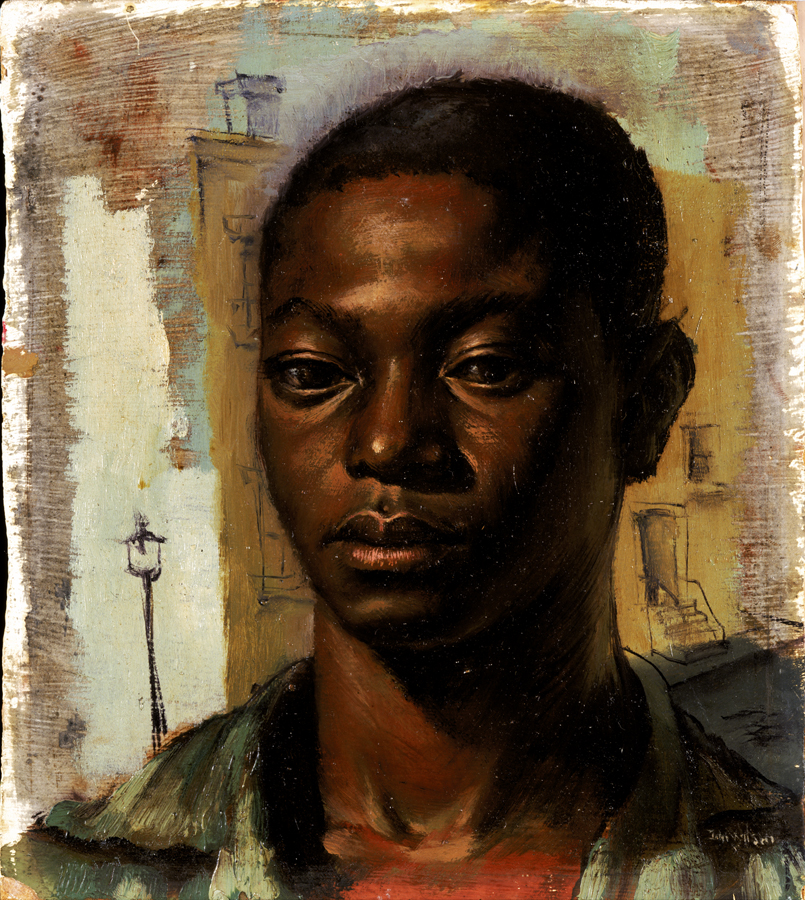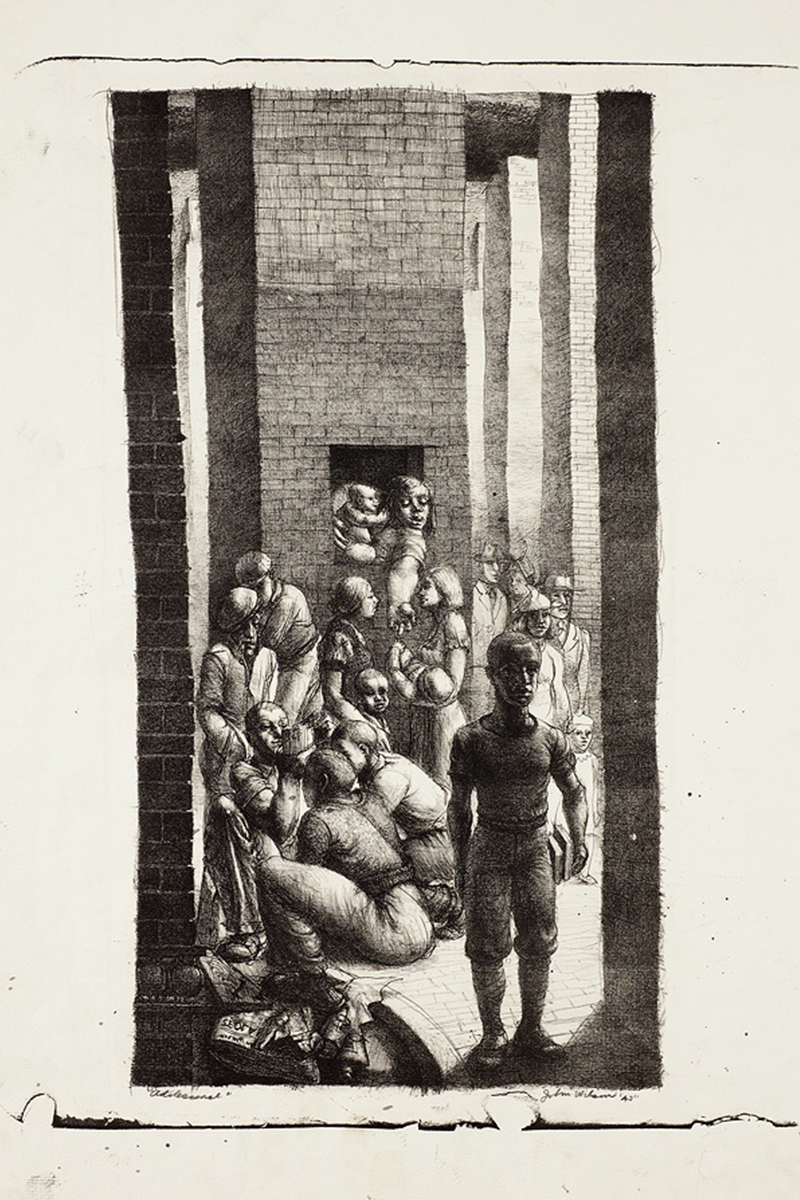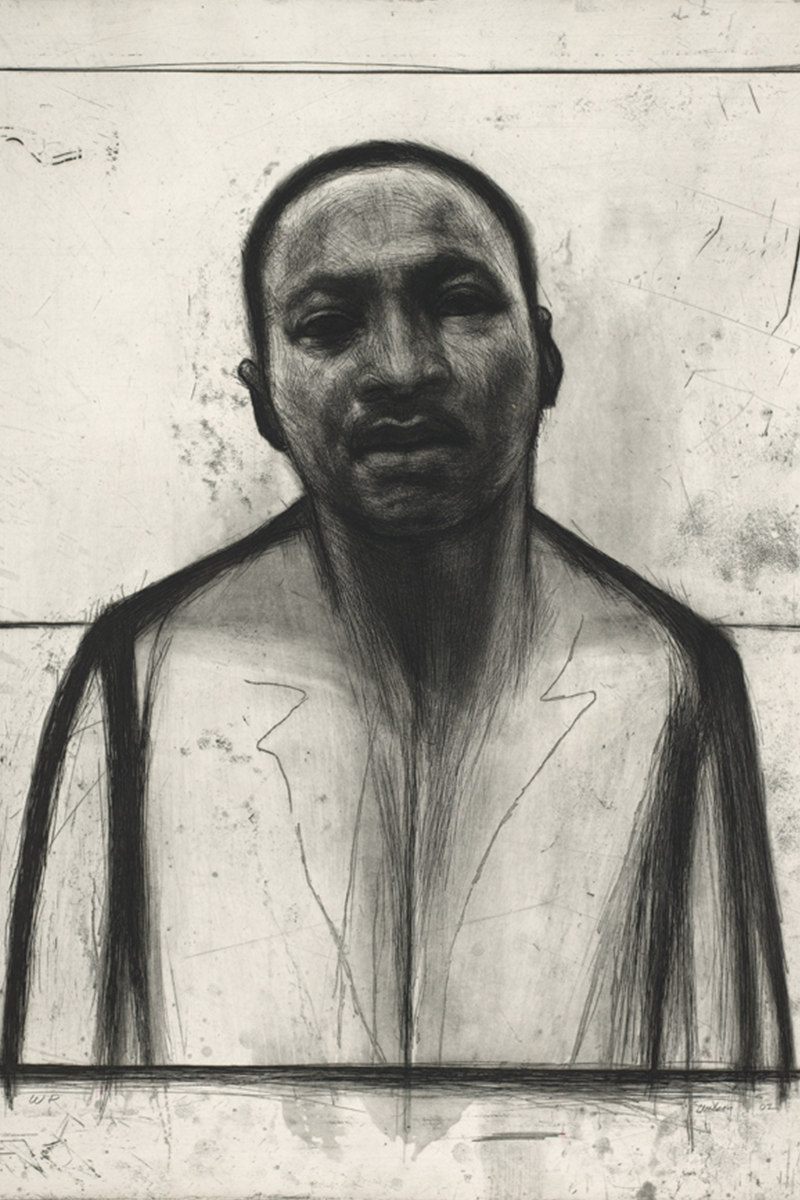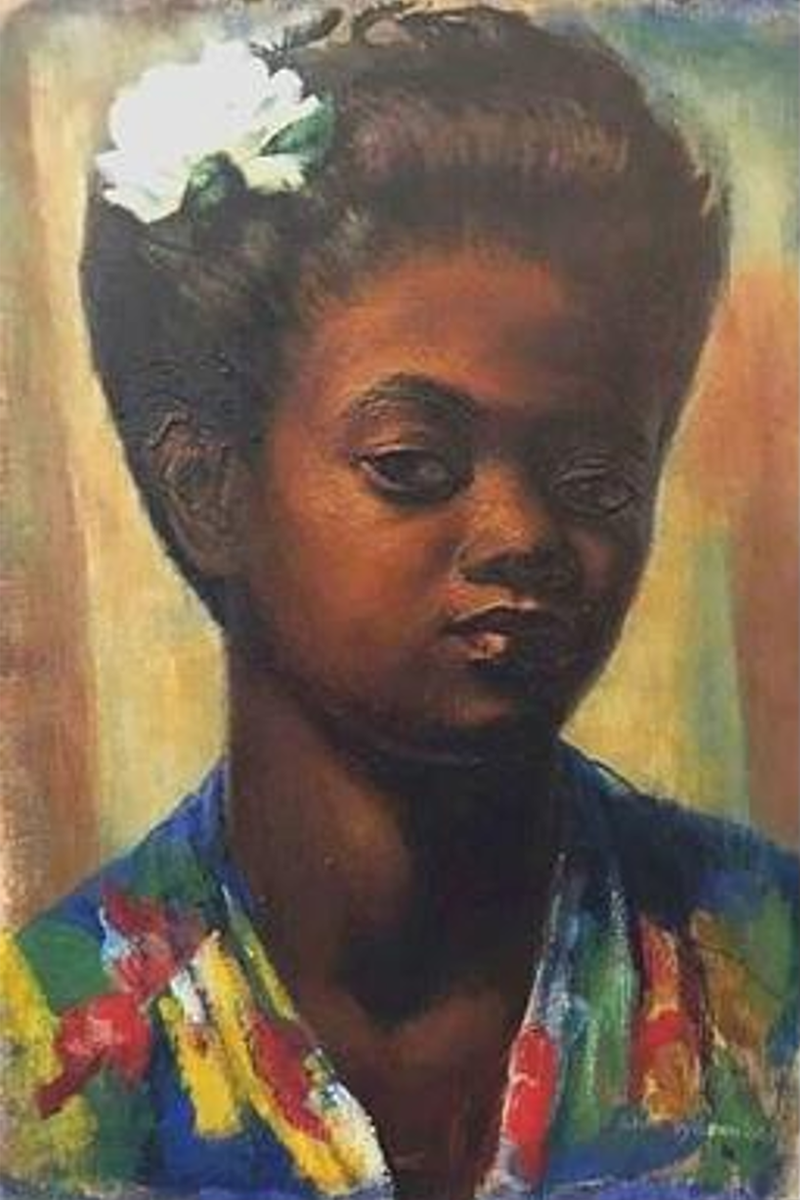
John Wilson at SCMA (including a New Acquisition)
Danielle Carrabino is the Curator of Painting and Sculpture at SCMA.
The Smith College Museum of Art (SCMA) has the distinction of being the first museum to have purchased a work by John Wilson (1922-2015) (SC 1943.4.1). He was still a student at the Museum of the School of Fine Arts in Boston (MFA) when he painted the portrait of his younger brother, Frederick. Throughout his life, Wilson challenged the inherent racism and social injustices he encountered in the art world and the world at large. His frustration with the limited number of Black people depicted in paintings in museums led him to rectify this disparity by creating portraits of his family and friends throughout his career. Whether in painted, drawn, printed, or sculpted form, Wilson’s portraits are deeply personal and provide insight into the personality of his sitters. This is the story of how SCMA played a part in the early career of the artist and how the museum continues to collect his works.

John Wilson (American, 1922-2015), Adolescence, 1943, lithograph printed in black on paper, sheet: 18 3/4 x 10 in., Purchased, SC 1943.6.1
John Wilson was born in Roxbury, Massachusetts as the second of five children to immigrant parents from British Guiana (today, Guyana). As a young child, he demonstrated great skill as an artist. He took his first art classes at the Roxbury Boys’ Club. His teachers there were students at the MFA School who told their professors about their promising young student. Wilson was later accepted to the MFA School in Boston on a full scholarship. Soon before graduating in 1942, he received a letter from Jere Abbott, director of SCMA at the time, inquiring about purchasing one of his works. As one of the co-founders of the Museum of Modern Art in New York, Abbott had his hand on the pulse of the art world and was constantly seeking promising young artists. The artist offered Abbott a painting of his brother, which he had painted that same year. Abbott also purchased a lithograph titled Adolescence from 1943 (SC 1943.6.1), an impression of which was also acquired by the Museum of Modern Art one year later. In 1946, the MFA acquired a lithograph, Streetcar Scene, created the previous year. The presence of Wilson’s art in museums helped bolster his career as an emerging artist.
After graduating from the MFA School in 1944, Wilson taught at the Boris Mirski School of Modern Art in Boston. By 1946, he was teaching at the Samuel Adams School for Social Studies and one year later, he earned a degree in Education from Tufts University. In the late 1940s, he was awarded funding to travel to Europe. In Paris, he worked with Fernand Léger and came into contact with a group of expatriate artists. Léger introduced Wilson to avant garde art and artists, but Wilson retained a realist style throughout his life, even at a time when abstraction was more highly valued in the art world.
Upon Wilson’s return to the US in 1949, he taught at Wo-Chi-Ca, a children’s workers camp in New York. There, he met artists Charles White and Jacob Lawrence and musician Paul Robeson. Around this time, he met his wife Julie Kolwitch. The two married in 1950. They later traveled to Mexico, where Wilson mainly devoted himself to mural painting and printmaking. There, he met Elizabeth Catlett (who was married to Charles White at that time) at the Taller de Gráfica Popular. When they returned to the US in 1956, Wilson worked as a graphic designer in Chicago and later in New York. By 1960, he and his family settled in Boston where he taught art at Boston University School for the Arts (1965-86). He also co-founded the National Center of Afro-American Artists in Boston.

John Wilson (American, 1922-2015), Martin Luther King, Jr., 2002, etching and aquatint on medium thick, moderately textured warm white paper, sheet: 35 7/8 x 30 in., Purchased with the Margaret Walker Purinton Fund, SC 2024.13.1
In 1985, Wilson won the commission to create a bronze bust of Martin Luther King, Jr. for the US Capitol building. The drawing for this project was later included in a traveling exhibition on King organized by the Smithsonian Institution from 2002-2004. Due to the light sensitivity of works on paper, the drawing could only be included in the first venue. Wilson created an etching with James Stroud at Center Street Studio in Milton, Massachusetts so that the drawing could travel to all six venues of the exhibition. SCMA acquired a proof of this print in 2024 (SC 2024. 13.1).
Wilson won many awards and his work was featured in exhibitions throughout his life. However, he never gained the attention he deserved and was not as well-known or appreciated as some of his contemporaries. In addition to the prejudices against non-white artists, he did not produce as many works as his peers due to his dedication as both an educator and a father.
Wilson has long been overlooked, but his art has recently garnered more attention thanks to an exhibition co-organized by the Museum of Fine Arts, Boston and The Metropolitan Museum of Art. “Witnessing Humanity: The Art of John Wilson,” is the largest retrospective exhibition on the artist to date. The SCMA painting, My Brother, will be displayed in both venues of the exhibition. When the organizers of this exhibition asked to borrow this painting, we were faced with a difficult decision. This painting was on view in SCMA’s permanent galleries and it is often used for teaching at Smith. It would be hard to part with this painting for a year. On the other hand, we felt it was important for SCMA to be part of this exhibition as this painting was a key part of Wilson’s career as an artist. In exchange for My Brother, I asked the curators of the exhibition for the reciprocal loan of a painting that could take the place of My Brother on the walls of the museum. We were offered a painting of the artist’s sister, Eleanor, that is closely related to the SCMA portrait of Frederick. My Sister (1944) is similar in size and roughly contemporary with My Brother. The painting has been in the Wilson family’s possession until recently and it was exhibited to the public only once in 1946.

John Wilson (American, 1922-2015), My Sister, 1944, oil on masonite, 16 x 11-1/4 in. Muriel Palitz '53 fund for American Painting
Soon after the painting arrived at SCMA, the opportunity arose to purchase it. I am delighted to announce that it is now officially part of the collection. We hope to reunite the two paintings of Wilson’s siblings upon the return of My Brother to SCMA. Together, the four SCMA works by this artist span the arc of his 60-year career, from his beginnings as an art student to his maturity as an artist.
My Sister is currently on view on the Third Floor of SCMA and My Brother is in the “Witnessing Humanity” exhibition at the Museum of Fine Arts, Boston until June 22, 2025. A slightly modified version of the exhibition will be at The Metropolitan Museum of Art from September 20, 2025 until February 8, 2026.
For more information about Wilson, there is a one-hour-long podcast about him in the form of an interview with Leslie King-Hammond and Edward Saywell, see the Modern Art Notes podcast with host Tyler Green.